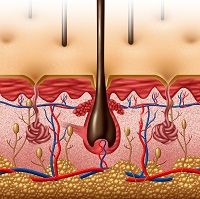Article
Clinical Review: Deeper Understanding of Skin Could Have Revolutionary Impact for Dermatology, Surgery
Author(s):
Study results suggest that closely studying skin's dynamic behavior, including its changing characteristics over time, could yield significant clinical benefits for both dermatologists and surgeons.

A review in Experimental Dermatology suggests more closely studying skin’s dynamic behavior, including its changing characteristics over time, could yield significant clinical benefits for both dermatologists and surgeons.
“The skin is often viewed as a static barrier that protects the body from the outside world,” the review authors note. “Emphasis on studying the skin’s architecture and biomechanics in the context of restoring skin movement and function is often ignored. Our views of skin structure tends to be static, two dimensional and focus largely on biological functions. Often overlooked is the dynamism of skin, which involves multidirectional stretch and compression, allowing for low friction gliding movement. Only when skin is diseased, scarred or aged do we appreciate how important this feature is to daily activity.” The review highlights in particular how injury, disease or aging results in a dramatic changes to the microarchitecture and physical characteristics of skin.
The review makes a number of fascinating points regarding how a greater understanding of skin could lead to advancements, including:
- Closing skin wounds: Skin structure is designed to minimize stress across the tissue as it is deformed through movement or external forces. Skin can extend in any direction when a force is applied, but there is a favored “grain,” upon which more stretch can be applied before a mechanical plateau and end point is reached. Skin can adapt to these forces by mechanical relaxation of the collagen fibers and biological remodeling of the fibrous structure resulting in mechanical and biological “creep.”
- Skin toughness: Groin skin is very lax, whereas the deltoid, chest, and abdominal skin are less lax despite having similar collagen concentrations, indicating the dermal and hypodermal structure influences the overall elastic modulus at these sites. Skin on the palms and soles is specialized to increase surface area and enhance grip.
- Racial differences: Beyond obvious differences in pigmentation, there are significant differences racially in stratum corneum thickness and adherence. Asian skin, for example, is the thinnest and highest in lipid and water content. Asian and Caucasian facial skin have fewer pores and smoother pore architecture than seen in Hispanic or African skin. “The differences in the mechanical behavior of ethnic skin remain largely under studied, which has huge implications to generalizing effects of skin treatments to all races,” the review authors note.
The review also looks at comparatively wider studied gender differences in skin and age, but reveals that much more can be learned, especially how aging effects the mechanical integrity of the retaining structures which visibly degenerate over time. A better understanding of pathology differences, also well-studied but still not well-understood, could lead to advances in treating conditions such as atopic dermatitis and many others.
“The appreciation of the architectural continuum of skin provides us with many concepts that helps us better understand how aging, disease and injury effect the skin health and cosmesis,” the study authors conclude. “By studying the physical and temporal dynamism of skin we can further appreciate, simulate or engineer more realistic skin.”



